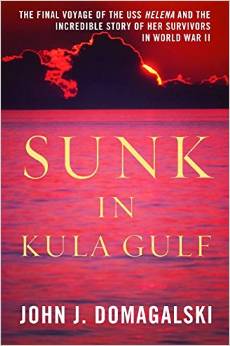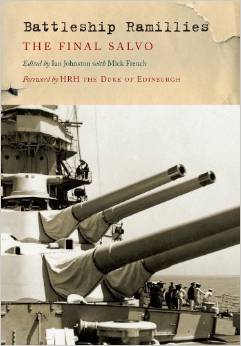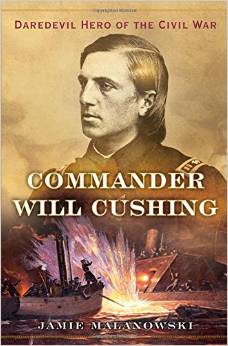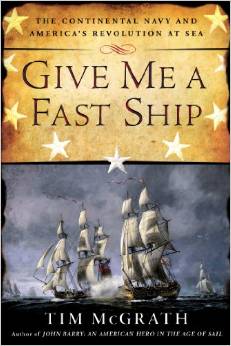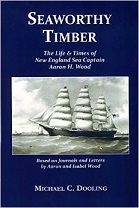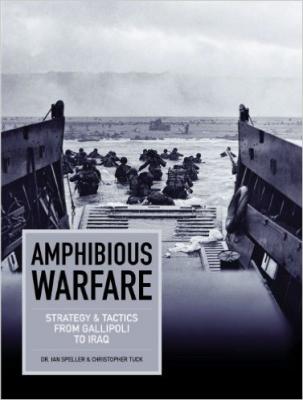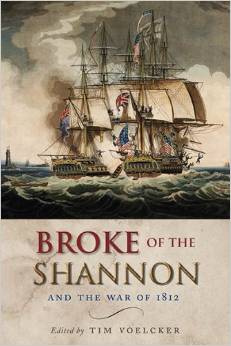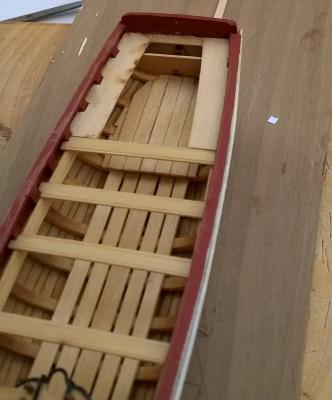-
Posts
1,401 -
Joined
-
Last visited
Content Type
Profiles
Forums
Gallery
Events
Everything posted by Matrim
-
K I have completed my workbench (so can start on my Amphion) but will move back to complete the longboat first. Unfortunately I seem to have knocked the mast of during the bench building (lots of bug planks being flung about). That is fine as I can rebuild the thwart but I also....seem to have lost one of ther belaying pins. Just in case Modelexpos customer service is less than exemplary can anyone off the top of their head tell me the correct part I can order to replace. I will start flicking through the manual to see if that gives details tomorrow but thought I would short cut and check here first Cheers, Joss.
- 33 replies
-
- model shipways
- 18th century longboat
-
(and 1 more)
Tagged with:
-
Thanks for the detail on the metal work. I just managed to snap mine (my son knocked the mast which was in over which damaged the wood) so am re-doing and want to do a better job and this post will really help..
- 335 replies
-
- 18th century longboat
- Finished
-
(and 1 more)
Tagged with:
-
Looked at it objectively around this time and earlier the Dutch were an unbelievably good military force. They held of the Spanish army (at its prime) and really whipped the English Navy badly at several points. After the protestantisation of England the two countries had very similar outlooks and often had a mutual interest in neither state failing but at the same time were competing for the same expansive/trade areas (that competition was 'won' by the Dutch early on and then given up later on, I vaguely recollect NAM Rodgers putting this more down to Dutch politics than English military/political skill though. It is a fascinating area of history..
-
Seems a more aggressive interpretation than I usually have read so sounds doubly interesting. I wonder if people since have pushed the 'Glorious Revolution' due to embarrassment that the attack succeeded and it therefore sounds better to pretend it is what the people wanted to avoid the military failure. The English, like most peoples, have always been a mis-match of societies and nationalities and the arguments as to influence roll back over every century - even before 'England' was an entitiy as such you had the celts pushed out by the Romans then the Vikings/Saxons. England was just as impacted by the waves of germanic migration caused by Asian pressure as the rest of Europe. I have always felt that the strongest influence was Northern European/Germanic and this Dutch link would be a later facet of a common thread... I will buy, I think, to learn more of her interpretation..
-
Psk It is alright but I would not pay that much for it. Having looked through a lot of the logs and background data it seems to me that the research for that book was primarily through the easy pickings of common biographies and not going much further than that. It is a tiny little book as well possibly because of that. You could cover the majority of the book by reading 'Remember Nelson' (a good biography of William Hoste) and O'Briens memoires. O'Briens memoires are an ebook https://books.google.co.uk/books?id=I9cDAAAAQAAJ&pg=PA2&lpg=PA2&dq=o%27brien+amphion+navy+escape+donat&source=bl&ots=cAJmohqsWh&sig=zSW0T58ArF2dKYtD0rWzym2DFGU&hl=en&sa=X&ved=0CB8Q6AEwADgKahUKEwjS3uH-66DIAhULPD4KHYhaCWo#v=onepage&q=o%27brien%20amphion%20navy%20escape%20donat&f=false and you can get feathers book on Kindle for 99p http://www.amazon.co.uk/gp/product/B00BJ83R48?keywords=o%27brien%20amphion&qid=1443687646&ref_=sr_1_fkmr0_1&sr=8-1-fkmr0 which is much more reasonable. I have the physical copy but the book itself is of a binding I associate with cheap books sold when you visit tourist attractions so is also nothing special.
-
Sunk in Kula Gulf: The Final Voyage of the USS Helena and the Incredible Story of Her Survivors in World War II By John J. Domagalski Washington, DC: Potomac Books, 2012 6-1/4” x 9-1/4”, hardcover, xvi + 237 pages Photographs, maps, notes, bibliography, index. $32.95 ISBN: 9781597978392 John J. Domagalski is on something of a roll, bringing out a new book on American naval history during World War II in the Pacific every couple of years. He brings a very interesting perspective to these works, since they are primarily based on extensive interviews with surviving veterans of the conflict—he has met with almost fifty of these men to record their stories. Sunk in Kula Gulf shares many characteristics with his previous book, Lost at Guadalcanal. The framework is provided by careful and wide usage of well-established secondary sources selected from the many books published on the United States Navy’s war in the Pacific over the past half century. Into this he incorporates the personal recollections of the veterans and extensive details drawn from extant official combat reports in the archives. The net result is a very rich story that has an immediacy and a human connection that more academic analyses will omit. Domagalski is not the first author to tap into the power of enriching stark official reports with personal narratives—John Lundstrom comes to mind as another practitioner. Nevertheless, Domagalski is extremely successful in skillfully blending the unadorned factual details of the cruiser Helena’s fight at Kula Gulf in July 1943 with the fascinating and utterly absorbing perspectives of the sailors who fought the ship. This is really history with a human face. It helps greatly that Domagalski is a very good writer who is able to bring his reader along with him as he tells his story. His prose is simultaneously lucid and compelling. This style of history may not appeal to professional academics but Sunk in Kula Gulf include important material that might otherwise be lost, presents a powerful story, and tells it very well indeed. James Johnson San Diego, California
-
Battleship Ramillies: The Final Salvo Edited by Ian Johnston with Mick French Barnsley: Seaforth Publishing, 2014 6-1/2” x 9-1/2”, hardcover, 256 pages Photographs, notes, index. £25.00 ISBN: 9781848322073 The British R-class battleships always were overshadowed by their faster precursors of the Queen Elizabeth class and, consequently, also received less modernization during the inter-war period. Nevertheless, they acquitted themselves well during World War II (after the dramatic early loss of Royal Oak at Scapa Flow in 1939); one, Royal Sovereign, even being transferred to the Soviet fleet under Lend-Lease. Ramillies was the last of the class to commission, in 1917. This intriguing book explores the ship’s history through a compilation of narratives by men who served aboard during its thirty-year career. This makes for a somewhat disjointed reading experience, but the benefits far outweigh this. The vast majority of the narratives collected by the editors came from sailors on the lower deck rather than from commissioned officers. The cumulative impact of this collection is that it paints a vivid and highly engaging picture of life aboard a major warship of the Royal Navy, primarily during wartime but also during the years of peace between the two world wars. Ramillies saw very wide service during World War II, operating successively with the Home Fleet, as part of Force H at Gibraltar, in the Indian Ocean, with the Mediterranean Fleet, in the Far East again, and during the invasions at Normandy and in the South of France. This wide service is reflected in particularly interesting reminiscences from the sailors manning the battleship. They describe both the moments of combat drama and also the long periods of boredom and discomfort, especially noticeable in an old ship without air-conditioning that served for prolonged stretches of time in hot and humid climates. These stories are backed up with a wide selection of photographs, many of which come from private collections and have never been published before. One very nice touch is the inclusion of a few stories from the Home Front: the wives of those who served. This book also has some potential value to model makers interested in the ship. The photographs often reveal details not immediately obvious in drawings. In addition, the end papers present full-color side views of Ramillies at the beginning and the end of its service, both, interestingly, in camouflage. Battleship Ramillies: The Final Salvo is a most enjoyable read. It is informative on many levels and highly recommended to those interested in the realities of sailors’ lives in wartime. Mark Meyers New Bern, North Carolina
-
Commander Will Cushing: Daredevil Hero of the Civil War By Jamie Malanowski New York: W.W. Norton & Company, 2014 6-1/2” x 9-1/2”, hardcover, 304 pages Illustrations, notes on sources, bibliography, index. $26.95 ISBN: 9780393240894 The memory of William Barker Cushing exerts a powerful influence over the United States Navy, as evidenced by the naming of five warships in his honor (its first torpedo boat and four destroyers). His brief, colorful, and action-packed naval career from 1861 to 1874 led many to view him as the epitome of a dashing and heroic officer: “a man who comes next to Farragut on the hero roll of American naval history,” in the words of Theodore Roosevelt. This reputation for daredevilry has attracted biographers over the years. Perhaps it is the sesquicentennial of the Civil War that has led to the publication of four books about Cushing’s career in a ten-year period, of which this is the most recent—the publisher’s assertions that Cushing is little-know is surprising in light of the recent studies by Schneller (2004), Stempel (2011), and McQuiston (2013). What, then, does Jamie Malanowski bring to the table that the other recent authors do not? Most obviously, this biography is the most comprehensive; all of the others recount his life story, but Stempel and Schneller concentrate their attention on his Civil War exploits, while McQuiston’s focus is Cushing’s post-war career. Malanowski’s book is very good in describing and analyzing Cushing’s rambunctious life before the Civil War (which led to his dismissal from the Naval Academy). It also does fine work in detailing his later naval career and untimely death. Highlights of the author’s coverage of these periods are his skillful incorporation of the reactions of Cushing’s contemporaries and the inclusion of many quotations from his own letters and remarks. Nevertheless, like all his biographers, Malanowski is drawn magnetically to Cushing’s Civil War exploits. About two-thirds of the book recounts this part of his career from his re-appointment by Secretary of the Navy Gideon Welles to his skullduggery in the attack on Fort Anderson below Wilmington. Malanowski is thorough and incorporates many interesting snippets into his exciting presentation of this part of Cushing’s career. This new biography of Cushing does not break new ground. Nevertheless, it shines because of the breadth of its coverage and the author’s superb writing. Specialists and general readers alike will find it both informative and enjoyable. Kevin O’Mara San Francisco, California
-
The Liberty Ships of World War II: A Record of the 2,710 Vessels and Their Builders, Operators and Namesakes, with a History of the Jeremiah O’Brien By Greg H. Williams Jefferson, North Carolina: McFarland $ Company, 2014 6-3/4” x 10”, softcover, 364 pages Photographs, glossary, bibliography, index. $75.00 ISBN: 9780786479450 Although these vessels lacked any of the glamor of the fighting warships, tanks, and warplanes mass-produced in World War II, without the Liberty ships, arguably, the Allies could never have won. Yards on all coasts of the United States built these 2,710 ships faster than German U-boats could sink Allied merchant shipping, thus maintaining the oceanic pipelines of supply and enabling offensive operations in Europe and the Pacific. Despite their importance, not much has been written about these ships. Frederic Chapin Lane’s 1951 Ships for Victory covers the entire story of the Maritime Commission’s production program and Peter Elphick’s 2006 Liberty: The Ships That Won the War is full of first-hand accounts. The “bible” on the subject since its publication in1970 has been The Liberty Ships, by L.A. Sawyer and W.H. Mitchell. This listed all the ships by the yards that produced them, briefly described the shipyards, and provided short accounts of each vessel’s career. Greg Williams’s new book succeeds in improving upon The Liberty Ships. The first three of its six parts contain essentially the same information as the 1970 book brought up-to-date to incorporate new information and research over the past forty-five years. In particular, it includes much more complete information on the ships’ post-war careers—large numbers were still in service in 1970 but now there are none still working (three are museum ships). The book’s other three parts provide substantial new information. Parts V and VI are devoted to the surviving Liberty ship Jeremiah O’Brien, which is preserved as a museum ship based in San Francisco. These sections cover the ship’s career in detail and provide a detailed account of its restoration and subsequent voyages as a museum ship. Part IV will probably be of most interest to researchers, historians, and students of the Merchant Marine, since it lists all the general agents that operated the Liberty ships on behalf of the Maritime Commission during World War II. Williams provides short “biographies” of each of these agents, some of which had been in business since the early 1800s. Overall, the 364 pages of The Liberty Ships of World War II are packed with information, much of it new. Williams (and his publisher) waste little space on literary flourishes; this is a solid reference book and well worth its price. Michael O’Brien Tampa, Florida
-
Give Me a Fast Ship: The Continental Navy and America’s Revolution at Sea By Tim McGrath New York: NAL Caliber, 2014 6-1/4” x 9-1/4”, hardcover, 543 pages Illustrations, maps, notes, bibliography, index. $26.95 ISBN: 9780451416100 The war at sea during the American Revolution more often than not appears as a series of major actions between British and French fleets, American privateering escapades, and the fight between Serapis and Bon Homme Richard under the command of John Paul Jones. Although there is a superb ongoing series from the Naval History and Heritage Command, Naval Documents of the American Revolution, substantial primary source documentation, and a quite extensive academic literature (as this book’s bibliography reveals), the work of the Continental Navy seems largely to have escaped popular attention. Tim McGrath’s new book should go a very long way toward correcting this situation. It is superbly grounded in very extensive research that exploits both primary sources and scholarly writing on the subject. This academic rigor, however, never prevents McGrath from telling an exciting story; instead, it consistently underpins his presentation of the Continental Navy’s operations. The major theme that emerges from Give Me a Fast Ship is the sheer audacity of the men who assembled the Continental Navy and took it into combat against the most powerful fleet of the time. Ultimately, its successes were insufficient to prevail against the Royal Navy at sea, but its efforts laid the foundations for the present United states Navy. McGrath shines as both researcher and narrator. Give Me a Fast Ship is compelling history, and deserves to succeed in making the Continental Navy’s accomplishments part of our popular culture. William Cowell Charleston, South Carolina
-
Frauen an Bord von Frachtsegelschiffen 1850 bis 1939 By Ursula Feldkamp Bremerhaven: Deutsches Schiffahrtsmuseum & Wiefelstede: Oceanum Verlag, 2014 8-14” x 10-3/4”, hardcover, 327 pages Illustrations, English summary, notes, bibliography. €34.90 ISBN: 9783869270753 The subject of women on board sailing ships has attracted considerable scholarly attention, particularly on the past twenty-five years. In the United states, much of this work has focused on the wives of whaling captains during the “glory years” of the American industry and, to a lesser extent, on those of the masters of the large ocean-going merchant vessels engaged in the international trades in the later half of the nineteenth century. There is also a growing literature addressing the experiences of women serving aboard American sailing ships during the twentieth century, primarily on what may best be described, broadly, as sail training vessels (quite a number of which now have female captains). Ursula Feldkamp’s new study covers a rather different demographic. The first part parallels the experiences of the wives of nineteenth-century oceanic traders from the German perspective. The most compelling elements are her discussions (based on the women’s own accounts) of their experiences as essentially “invisible” people; they were clearly noticeably on board ship but, simultaneously, their presence was ignored as much as possible by the crews, except to the extent that their femininity (and the related ideals of womanhood of the period) impinged on activities. Good examples of this were special arrangements to allow women to embark and disembark without offending their modesty and the impact of children (and even childbirth) on ships at sea. The second component of her work addresses women working as crew on ships, mainly during the twentieth century. Labor shortages during world War I seems to have been a major precipitant of such work, but it continued well after the end of hostilities, especially as major fleet operators discarded their sailing vessels. Many of these ships entered service with “budget operators” whose primary concern was to minimize expenses. Consequently, they were less attractive as berths for professional sailors, which opened the door, on a limited scale, to women. For the most part these women openly served aboard ship, creating scenarios for considerable tension, especially as most of the male sailors tended to be young apprentices, often with less experience than their female shipmates. Feldkamp’s study is a very important contribution to this field of study. Her approach combines women’s own narratives with thorough exploration of the contexts and paradigms within which they lived and worked to generate new perspectives on this very old story. Helena Goldstein University of Chicago
-
The Battle of Midway: The Naval Institute Guide to the U.S. Navy’s Greatest Victory Edited by Thomas C. Hone Annapolis: Naval Institute Press, 2013 6-1/4” x 9-1/4”, hardcover, xx + 360 pages Photographs, maps, appendices, notes, bibliography, index. $38.95 ISBN: 9781612511269 The Battle of Midway looms large to this day in the minds of current United States Navy professionals, the nation’s strategists and war planners, those who develop plans for the fleet’s composition, government officials (both elected and in the civil service) who determine funding for the Navy, and historians of naval warfare, to list only a few. Its outcome vindicated the pre-war prognostications of the supporters of carrier aviation and, in so doing, secured the ground for the aircraft carrier’s centrality in the Navy’s subsequent evolution—physical, doctrinal, strategic, tactical, and even emotional—for the past seventy years and into the foreseeable future. The new Naval Institute guide to the battle is almost entirely a collection of articles and chapters from previous Press publications, in both books and Proceedings (the exceptions are several oral histories and transcriptions of official documents). The dates of publication run the gamut from the 1950s to the early 2000s, with the bulk of the material pre-dating 2000. The editor, Thomas C. Hone, contributes a brief overall introduction and short introductory pieces for each section that set the stage for the various contributions. He deploys an effective blend of chronological and thematic presentation that provides a more useful perspective for analyzing the battle and its impact both on the war in the Pacific and, long-term, on the Navy. The original documents and the oral histories are not readily available and most readers would be hard pressed to locate all the articles drawn from Proceedings without substantial personal libraries or access to research collection. The selections from books, however, all are from works that most students of World War II naval history would own already. This Naval Institute guide to the Battle of Midway thus is something of a mixed bag. It presents a lot of material in a readily accessible form but it does not add to the scholarship surrounding the operation (and some of its elements are very dated indeed). This is a useful work for more casual readers but of limited use to more committed researchers or students. George Morrison Seattle, Washington
-
Seaworthy Timber: The Life & Times of New England Sea Captain Aaron H. Wood By Michael C. Dooling Carrollton Press, 2014 6” x 9”, softcover, 193 pages Illustrations, references, notes. $21.95 ISBN: 9780962742493 In telling the story of the life of Aaron Wood, from when he starts on board as “boy” to his promotion to able seaman and eventually to captain of his own ships, the author, Michael Dooling, examines the Age of Sail from the great clippers to the Downeasters of Maine at the end of the century. In 1854, Aaron and his friends from Swansea sign aboard Monarch of the Seas with Captain Gardner. On this maiden voyage, the ship tests the new slipway at the Naval Yards in Pensacola and then heads to Europe with cotton, before the ship is recruited to transport supplies, troops and horses to the front lines of the Crimean War in the Black Sea. The book includes Aaron’s first-person accounts of visiting the battlefields at Sevastopol as a spectator and seeing the first-ever use of shell guns and floating iron-sided batteries at Odessa. More surprising than a picnic overlooking the battle, was that the captain’s wife, Mrs. Gardner, was along with them to view the spectacle. These chapters include contemporary maps of the area, a diagram of the floating battery, and photos taken by English war correspondent William Russell. Other figures in the book include paintings and photos of ships, sail plan drawings, clipper sailing cards, portrait photos, and original pages from journals. Much of the strength of this book is that the portrayals of events and activities are taken from the primary documents and Dooling elaborates on the history that is contemporary to his life such as trade relations, economic trends and the changing importance of shipbuilding in the United States. The author does a wonderful job of bringing in details of people who were part of that history, such as Nathaniel Hawthorne working as the American Consul in Liverpool at the start of the Crimean War. He includes full entries from Aaron’s journal (often only a few sentences each day) and fills in the gaps with information from his friend who signed on at the same time. After Aaron became captain, he soon married Isabel Pearce in 1864, and his story is continued through her letters as she joins him on the ship. She sailed with him for the next 20 years on four ships; Emerald Isle, St. Mark, Sagamore, and Sovereign of the Seas, Together they survived about twenty-two times around Cape Horn, raising their son Oscar onboard until he was eight years old, and transporting goods until the 1880s, when they finally retired to a vineyard in California. The only real detriment to the book is the unfortunate choice of a shiny paper for print which makes for a glare on the pages. At times, a chapter will meander a long while before explaining how the history relates to Aaron, but overall the book showcases the author’s dedication to his subject in bringing Captain Wood to life again. R. Laurel Seaborn Salem, Massachusetts
-
The Origins of the Lost Fleet of the Mongol Empire By Randall J. Sasaki College Station: Texas A&M University Press, 2015 6-1/2” x 9-1/4”, hardcover, 216 pages Illustrations, diagrams, maps, bibliography, index. $50.00 ISBN: 978-1623491949 Despite the growth of nautical archeology over the last forty years, less attention has been focused on the archeology of ships of Eastern Asia—Japan, Korea, and China—than elsewhere. The Origins of the Lost Fleet of the Mongol Empire, by Randall J. Sasaki, fills part of that gap. The book analyzes wrecks found off Takashima, in Japan. The ships, part of the second Mongol invasion of Japan in 1281, were sunk in the typhoon the Japanese afterwards named the Kamikaze, or Divine Wind. The long-forgotten wrecks were rediscovered in the 1980s, with research on the finding ongoing since then. An intact wreck was even discovered in in 2011. In 2004-2005, Sasaki, then a graduate student at Texas A&M’s Institute of Nautical Archeology, participated in these studies for his master’s studies. The book explores the results of his research, examining the origins of the ships wrecked off Takashima. Three different types of ships were found: flat-bottomed lapstrake boats, flat-bottomed carvel craft, and round-bottomed vessels. Sasaki identified both the origins and probable purpose of each type of ship based on its timber and construction (respectively: Korea, the Yangtze River, and Fujian Province). Sasaki clearly presents the logic behind his conclusions, explaining how the woods and fastenings discovered on the offered clues to their origins. He takes readers on a tour through the shipbuilding techniques of thirteenth-century Korea and Japan. He provides significant and fascinating detail on how shipwrights built the ships that ended up off Takashima. The book is well illustrated, with maps, period images, modern archeological photographs, and author plans. The mix is well-thought out. It offers readers insight into the events leading up to the invasion and typhoon. The drawings and plans are extremely useful in illustrating the construction and shapes of the ships found. This book is concentrated very narrowly on one aspect of Asian maritime archeology. If you want to know how Korean and Chinese ships were built during this period, it provides a wealth of valuable information. On the other hand, if your interests have a broader focus, this book may not hold your interest. For the model-maker, it contains enough information to make a start on building a representative model of a Korean, Yangtze, or Fujian ship. Completing the model requires additional research. For those whose focus is maritime history, it offers a window into the Mongol invasion fleet, including its origins, organization, and loss. For those into marine archeology, it is a fascinating look at how research is done. While unlikely to interest everyone, those who are interested in this topic will find The Origins of the Lost Fleet of the Mongol Empire a useful addition to their library. Mark Lardas League City, Texas
-
Pitcairn Island as a Port of Call: A Record, 1790-2010 By Herbert Ford Jefferson, North Carolina: McFarland & Company, 2012 7” x 10”, softcover, 365 pages Illustrations, bibliography, index. $75.00 ISBN: 9780786466047 Beginning with the arrival of Fletcher Christian and the mutineers from Bounty, along with the Polynesians who joined them, this book focuses on the importance of visiting ships to Pitcairn Island. Herbert Ford, noted expert on Pitcairn history and winner of the 2012 Bounty Anchor Award, started the Pitcairn Islands Study Center and has written two previous books on the subject: Pitcairn and Miscellany of Pitcairn’s Island. In this edition of Pitcairn Island as a Port of Call, he draws on primary resources including the records of the local government, letters of crew who visited, and radio interviews with the islanders. The layout follows that of a logbook, listing each ship arrival at the island for over two centuries. Although this does not encourage reading the book from cover to cover, a researcher investigating Pitcairn or the flow of ships sailing in the Pacific would find this volume indispensable. The initial entries tell of the fate of the infamous mutineers, which the author emphasizes as the reason so many ships stopped to visit the island. The first decades saw battles and deaths reduced the numbers of adult men until only John Adams remained to become the islanders’ revered leader. In 1814, when British naval ships Briton and Tagus arrived, the two captains concluded that removal of Adams to stand trial for mutiny would be cruel to the small community. These tales of the first decades of interactions with voyaging mariners include the return of Captain Bligh, against whom the original men had mutinied, and the short abandonment of Pitcairn in the 1850s when the island could not support the growing population. Many of the entries focus on the boat handling skills of the Pitcairn men who braved the surf to meet the ships, and Ford includes photographs showing the evolution of the boats from wood to aluminum. The author also stresses the pious nature of the islanders, noting their tradition of singing hymns as ships departed. Although the book includes a map showing the location of Pitcairn in the Pacific, and some photographs of the town and landscape, a map of the island itself showing the relation of the boat landing to Adamstown might be beneficial. This second edition remedied the previous lack by supplying a comprehensive index, a boon for researchers who possess only a ship name and not the date of arrival. Although the index references many people, not all names can be found without knowing the boat. A search for the famous cruising couple, Lin and Larry Pardey, yields only their boat Talesin, arrived on September 16, 1983 from Panama. Since the initial settlement by mutineers, the crews of whaling ships and clippers of the nineteenth century through to troops aboard navy ships of the World Wars, Pitcairn retains a fascination that Ford captures in the various anecdotes included, and makes the book far more than just a catalogue of ship names. Laurel Seaborn Salem, Massachusetts
-
Amphibious Warfare: Strategy & Tactics from Gallipoli to Iraq By Ian Speller and Christopher Tuck London: Amber Books, 2014 7-1/2” x 10”, hardcover, 176 pages Illustrations, maps, bibliography, index. $34.95 ISBN: 9781782741404 Distributed in the United States by Casemate Publishers, Havertown, Pennsylvania Amphibious warfare is a concept utilized throughout history from ancient Egypt to the present day and employed by cultures all over the world, from the Vikings to the Chinese in the fifteenth century to both the Japanese and American forces in World War II. It also represents one of the most complicated types of warfare, requiring immense planning and cooperation between not only naval forces, but also military forces more associated with land-based warfare and air forces. Speller and Tuck take the complexity of amphibious warfare and explain it very clearly for even casual readers to understand. The authors offer valuable insight into the development of an amphibious operation from planning to execution using historical case studies from both World Wars, the Korean War and more modern conflicts such as the Falklands and the Gulf wars. While the introduction gives an overview of the history and different types of amphibious operations, the rest of the book’s structure follows the planning process, each chapter dedicated to a specific stage in the execution of an amphibious assault. This is extremely useful, as in each chapter, the former stages are often referred to. This in effect offers the reader to see each layer of amphibious warfare in a chronological time frame as well as the different elements of an assault from sea, land, and air forces. The authors also explain each concept clearly and concisely. The book also makes great use of campaign maps and photographs, which help visually explain concepts they introduce. Furthermore, the section of color illustrations of amphibious vehicles and vessels offers a look at different types from World War II, the Cold War, and modern day. Another strength of the book is the way the authors use their case studies to illustrate the concepts they introduce. With each case study, the authors focus on the particular concepts they explain in the chapter. In this way, readers can see the practical use of each concept. The authors do not focus on only western nations. They include discussions of Japan and its role in World War II and the Soviet Union during the Cold War. Similarly, they do not focus on just victorious operations. They give details of failures or near failures. This offers the reader a balanced view of different levels of war, from low-intensity to high-intensity conflicts and major complications in amphibious warfare during planning or execution. The major problem with the book is the lack of citations or a bibliography. The authors attempt to mitigate this problem by adding a “Further Reading” section; nevertheless, readers who wish to see directly where the authors got their information from will be lost. As such, the book offers a very structured and easy to read introduction to the concept of amphibious warfare. Even a student new to learning about naval operations will find the text understandable. However, without citations and a bibliography, using the book as a stepping stone to further research may prove difficult. Even so, as an introductory book, it is extremely useful in gaining an understanding of modern amphibious strategy and tactics. Adam K. Parker East Carolina University
-
Broke of the Shannon and the War of 1812 Edited by Tim Voelcker Barnsley: Seaforth Publishing, 2013 6-1/4” x 9-1/2”, hardcover, xxvi + 226 pages Illustrations, maps, notes, bibliography, index. $38.95 ISBN: 9781848321793 Distributed in the United States by Naval Institute Press, Annapolis, Maryland June 1, 2013 marked the bicentennial of the stunning victory of HMS Shannon over USS Chesapeake. The battle’s anniversary prompted a symposium in Suffolk to shed new light on the battle as well as the battle’s victor, Captain Philip Broke, RN. The product of the symposium was Broke of the Shannon and the War of 1812, an anthology of works by sixteen eminent scholars of naval history, edited by Dr. Tim Voelcker. This body of work can be divided into two main sections: the War of 1812 from the American, British, and Canadian perspectives, and then the life of Philip Broke and the battle fought between Shannon and Chesapeake. There are also several works that examine related issues such as naval education, prize law, the Halifax naval yard, naval medical opinions, the Hampshire Mill, caricatures, and naval ballads. In the introduction, Voelcker states that his motivations for assembling this body of work is twofold: to raise Broke and HMS Shannon from obscurity while bridging the gap between academia and the general public. Consequently, readers will find that Broke of the Shannon and the War of 1812 is both an enlightening and accessible body of work. Some scholars and students might be disappointed by the lack of footnotes (only direct quotations are cited), however, Voelcker explains that this was an editorial decision. A bibliography and a list of suggested works for further reading, however, is included for those who wish to pursue the subject in greater detail. Important to this work are the three essays that provide an overview of the War of 1812 from multiple perspectives. John B. Hattendorf provides valuable insights concerning American perceptions of the War of 1812. In this well-crafted essay, Hattendorf places the War of 1812 within the context of American politics while connecting it to the maritime dimensions of the war. He also argues that the engagement between Shannon and Chesapeake, as well as the successful blockade of Stephen Decatur’s squadron, marked a turning point in the war. Previously, the Royal Navy had experienced a disappointing succession of defeats in single ship actions. The British victory helped restore national pride and confidence in a navy whose series of uninterrupted defeats were viewed with contempt back at home. Andrew Lambert provides an analysis of British strategy and the economic impacts of the war, which includes a discussion of the coastal blockades and commerce raiding. Chris Madsen discusses the defense of Canada, however, his essay does not match the quality of the essays penned by Hattendorf and Lambert. In their analysis, these three authors indicate that the war played a role in establishing distinct national identities in both the United States and Canada. Two essays that venture into the realm of cultural studies provide the social and political context for the War of 1812. In one essay, James Davey examines visual communication in the form of caricatures. Caricatures reflected public attitudes and perceptions of the navy and, in some cases, helped shape those attitudes. High qualityprints in either color or black and white are included to illustrate Davey’s arguments. In another essay, Richard Wilson explores naval ballads, which helped elevate Philip Broke and his victory over Chesapeake in the national consciousness. The essays concerning the life of Philip Broke paints a portrait of a man torn between competing desires. On one hand, Broke possesses a deep and abiding devotion to his wife and family yet finds himself dedicated to the idea of bringing honor and glory to the Royal Navy. Broke’s goal of bringing honor to the navy is finally realized when he defeats Chesapeake and is received as a national hero back home. Martin Bibbing presents a lengthy essay on Broke’s contributions to naval gunnery. In the essay, Broke is portrayed as a man frustrated with the shortcomings of naval gunnery yet committed to finding practical solutions. Broke was an advocate of constant gunnery practice and used much of his own private funds to train his crew in live fire drills. He also installed gun sights and established a system of “director control” which allowed Broke to “train all his guns on a target simultaneously.” Consequently, Broke established a reputation “as one of the leading gunnery experts of the age.” Bibbing provides detailed descriptions and technical drawings to illustrate the challenges that Broke overcame in improving naval gunnery. In another essay, Bibbing provides a detailed narrative of the fateful naval duel fought between HMS Shannon and USS Chesapeake. Related essays on a variety of specialized topics are found throughout the anthology. Gabriela Frei successfully distills the technical subject of prize law into digestible material for the lay reader. Peter Schurr reflects on Broke’s injuries received in combat and dispels misconceptions regarding his injuries and recovery. Julian Gwyn provides an interesting description of the Halifax naval yard. Martin Salmon discusses the fate of HMS Shannon. John Wain discusses the founding of the Chesapeake Mill where the remains of Chesapeake can be found. Colin Reid discusses the final outcome of the war and the subsequent peace. As a whole, Broke of the Shannon and the War of 1812 presents a strong selection of works that prove both interesting and accessible. The variety of essays is diverse which lends a sense of thoroughness to the study. Students of naval history and the War of 1812 will find this book a valuable asset and a fine addition to their collections. David Bennett Exeter University
-
looks good and I like the curved tiller. I wussed out on mine and went for the straight...
- 100 replies
-
- model shipways
- 18th century longboat
-
(and 1 more)
Tagged with:
-
nice quality photos as well....
- 222 replies
-
- 18th century longboat
- model shipways
-
(and 2 more)
Tagged with:
-
Hmm I might grab some as well. I haven''t taken a close look at the rigging thread in the kit - is your produced stuff of better quality? as I might add that in as well..
- 162 replies
-
- 18th century longboat
- model shipways
-
(and 1 more)
Tagged with:
-
Brief update. I added the lockers using a paper template to get the size approximately correct and then added the wood. I have decided to paint it hence the 'burn marked' wood. I will see I am having some difficulty with the hinges for the hatch and have temporarily given up on that while I try and find a way that works for me to get them built. Basically my brass strap seems to thin to use lengthways and if width ways then the wire fills the width up and looks wrong. So something's not right beyond my inability to get the two to stick together and not separate when tool strong enough to cut the, cuts them. Cheers, Joss.
- 33 replies
-
- model shipways
- 18th century longboat
-
(and 1 more)
Tagged with:
-
The best tip for the planking is to glue one to two bulkheads at a time (past the first which can be clamped) as opposed to trying to do an entire plank in one go. I did the second then pulled the planks off and finished with the first and it went much better..
- 222 replies
-
- 18th century longboat
- model shipways
-
(and 2 more)
Tagged with:
-
Caroline Alexanders 'The Bounty' Just bringing this thread to life again as I have just finished re-reading this book for the fourth time and, as ever, was so impressed by it so felt a slightly more detailed book review would be in order. There may be some people out there who don't know the story of the Mutiny on the Bounty. I suspect that most would not be members of this site. But to precis it the popular 'newspaper version' is that a small ship is sent by Britain to ferry bread plants from Tahiti to the West Indies as food for slaves. The occupants of this ship are faced with one of the cruellest tyrants in the British Navy a hang em and flog em utter b*stard who makes life a living hell for all concerned. Eventually the noble Mr Christian (Masters Mate and acting Lieutenant) has had enough and mutinies along with a sub set of the crew. Bligh is then put into a boat (and honourably not killed on the spot). Most of the Mutineers end up on Pitcairn island free to continue their questionable sexual practices (apparently the age of consent was 12 until recently) whereas Bligh managed to con the little launch without maps from memory on starvation rations half way across the world to safety. That is the 'standard' version as beloved by Hollywood and some fictional authors (I exclude the Mel Gibson film from this group) and is also the version smashed to pieces by this magnificent book, M(s) Alexander has really done her research not just on the mutiny but on what happened afterwards. It is quite obvious that as opposed to reading a memoir plus existing histories and using those she has instead poured over as many original sources as can be found so letters, memoirs, court evidence, private evidence to build up a very different picture to the popular version. Not only does she do this she also shows how the current popular legend was generated. She handles the voyage and mutiny itself by simply reporting on what happened and allowing the men to speak in their own voices as much as possible and does not attempt to interpret. It is when the captured mutineers return (having survived their own wrecking and incarceration in Pandora's Box) and are court martialled that the book kicks up a gear. The author shows a very deep understanding of not only the undercurrents of peoples relationships but also society (and notable society at sea) and its ways as opposed to what exists now. Her deft handling of the ever present 'interest' and the manipulation of the various parties is fascinating and it paints an impressive picture of the British Navy of the time. As an example of this (And her quote heavy style allowing the participants to speak as much as possible) here is a quote from the latter part of the book describing something mentioned in the kangaroo court assembled by Fletcher Christians brother. Bligh throughout comes across as a talented professional with the highest standards who expected his officers especially to have the same dedication, if these are not kept to then he also had a temper but not one which led to mass floggings quoting the book again Perhaps if anything Bligh was not hard enough as after reading the book you can almost see where the problems arose and how the crew felt they had some 'right' to do as they wished yet came across Captain Blighs almost magnificent dedication to duty. This was one man who under no circumstances would let personal weakness stop him doing what was right regardless as to the consequences. I have known people like him and feel like I know people like the other crew members and for a historical book to generate that degree of empathy for people who died hundreds of years ago is no small feat in itself. Anyway I don’t want to go on about this to long so please have a look if you have any interest in the period at all. I don't think you will be disappointed. As a final aside the Gibson film runs closest to this version and due to this book (first published around 2003?) several fictional authors have produced more recent works which match this 'understanding' of events so finally, perhaps, William Bligh is getting his true just deserts after centuries of lies..
About us
Modelshipworld - Advancing Ship Modeling through Research
SSL Secured
Your security is important for us so this Website is SSL-Secured
NRG Mailing Address
Nautical Research Guild
237 South Lincoln Street
Westmont IL, 60559-1917
Model Ship World ® and the MSW logo are Registered Trademarks, and belong to the Nautical Research Guild (United States Patent and Trademark Office: No. 6,929,264 & No. 6,929,274, registered Dec. 20, 2022)
Helpful Links
About the NRG
If you enjoy building ship models that are historically accurate as well as beautiful, then The Nautical Research Guild (NRG) is just right for you.
The Guild is a non-profit educational organization whose mission is to “Advance Ship Modeling Through Research”. We provide support to our members in their efforts to raise the quality of their model ships.
The Nautical Research Guild has published our world-renowned quarterly magazine, The Nautical Research Journal, since 1955. The pages of the Journal are full of articles by accomplished ship modelers who show you how they create those exquisite details on their models, and by maritime historians who show you the correct details to build. The Journal is available in both print and digital editions. Go to the NRG web site (www.thenrg.org) to download a complimentary digital copy of the Journal. The NRG also publishes plan sets, books and compilations of back issues of the Journal and the former Ships in Scale and Model Ship Builder magazines.




